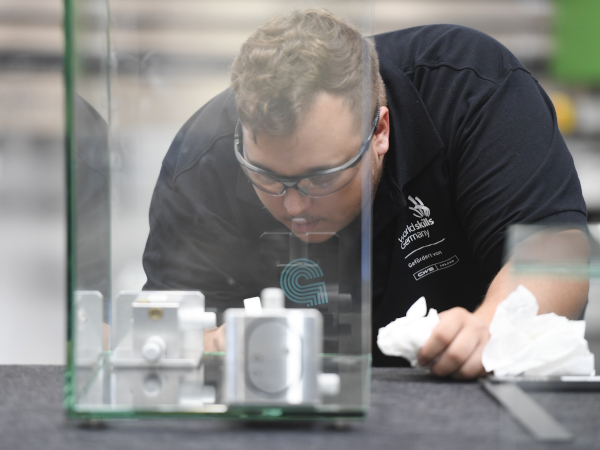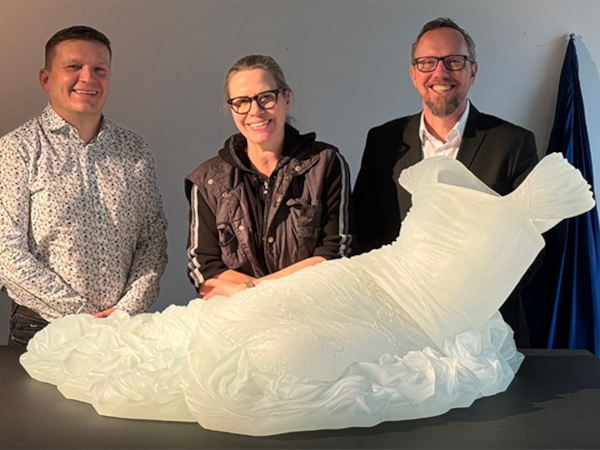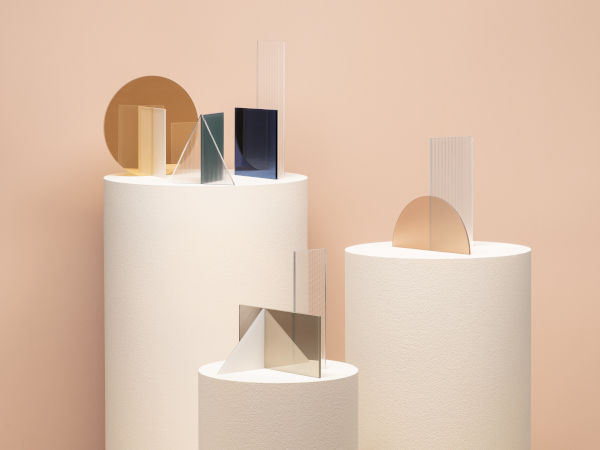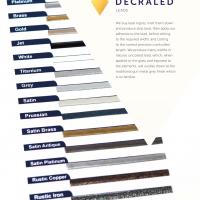Date: 2 March 2006
"One day, you sit down and look at the stuff and say, 'This is kind of nice -- I wonder if I can get more of it?'" says Kevish, 53, of Castle Shannon. She started going to auctions to buy the Depression-era treasures, and now has a collection of several hundred pieces.
This weekend, hobbyists like Kevish -- and those who are curious about the colorful appearance and history of Depression-era glass -- can dive into the past at the 29th Annual Depression-Era Glass and Pottery Show and Sale.
The show, which will be held Saturday and Sunday in New Kensington, features tables and tables of glass -- and some pottery -- mostly from the Depression era, but some pieces were made as late as 1980. Pieces available at the show -- featuring 29 merchants from around the country -- include dishes, drinking glasses, plates, vases, candlesticks and animal figurines.
Kevish -- president of the Three Rivers Depression Era Glass Society, which is sponsoring the event -- encourages people of all ages to come check out the show, whether they have discovered antique glass or not. But be warned: it's addicting.
"When you walk into the door of the show ... you'll be overwhelmed by the beauty of the color. It's like rainbow-vision," Kevish says. "When you look out at all this beautiful glass, I guarantee you, you'll get sucked in. Everybody does."
Perhaps you have a collection of Depression-era glass and don't even know it, Kevish says. Do you remember the box your grandmother gave you from her attic, but you have no idea what the glass pieces inside are? Bring them to the show on Sunday, when glass experts will identify the pieces for you.
Prices for items at the show vary dramatically. You can spend anywhere from a few bucks to a few thousand bucks for an individual glass piece, says Jim Leasure, chairman of the event, which organizers hope will draw about 1,500 people.
"It's very spectacular. It is quite a show," says Leasure, 62. He has a huge collection of Depression-era glass pieces -- "several hundred or several thousand, maybe" -- and the collection has taken over his house in Eighty Four, Washington County.
Depression-era glass -- besides its beauty in both the design and the rainbow of colors -- not only represents a dramatic and painful period of American history, but it served as one of the catalysts that helped move the United States out of the Great Depression of the '30s. That is because the glass encouraged people to spend money again, and therefore helped keep some industries afloat, Kevish says.
Many glassmakers -- who were looking, like everyone else, to save money during tough times -- mass-produced Depression-era glass with machines, because doing so was cheaper than making glass by hand. The glassmakers would sell the cheap glass to businesses, who would offer free glass pieces to cash-poor people in order to entice them to come in and spend money, Kevish says. For instance, business such as entertainment venues would offer a free glass plate for customers who buy tickets -- a business practice that continues in modern versions today.
"It really was the beginning of having premiums," Kevish says of Depression-era businesses. "That concept really originated in the 1920s and '30s. Because this glass was so inexpensively made, it was the ideal premium."
Plus, glass especially had an impact on the economy in Western Pennsylvania, which was known for its glass industry before the steel industry rose, Kevish says.
Many Depression-era glass enthusiasts did not live through the time period, Kevish says. And many folks in that generation ditched their glass pieces because they reminded them of painful times. Some are amused that their children and grandchildren collect the cheap glass.
"I think it has an enormous sentimental value," Kevish says. "For my generation, it is a definite nostalgia and has warm, fuzzy feelings ... like going over to grandma's and having cookies on a pretty pink plate."









Add new comment